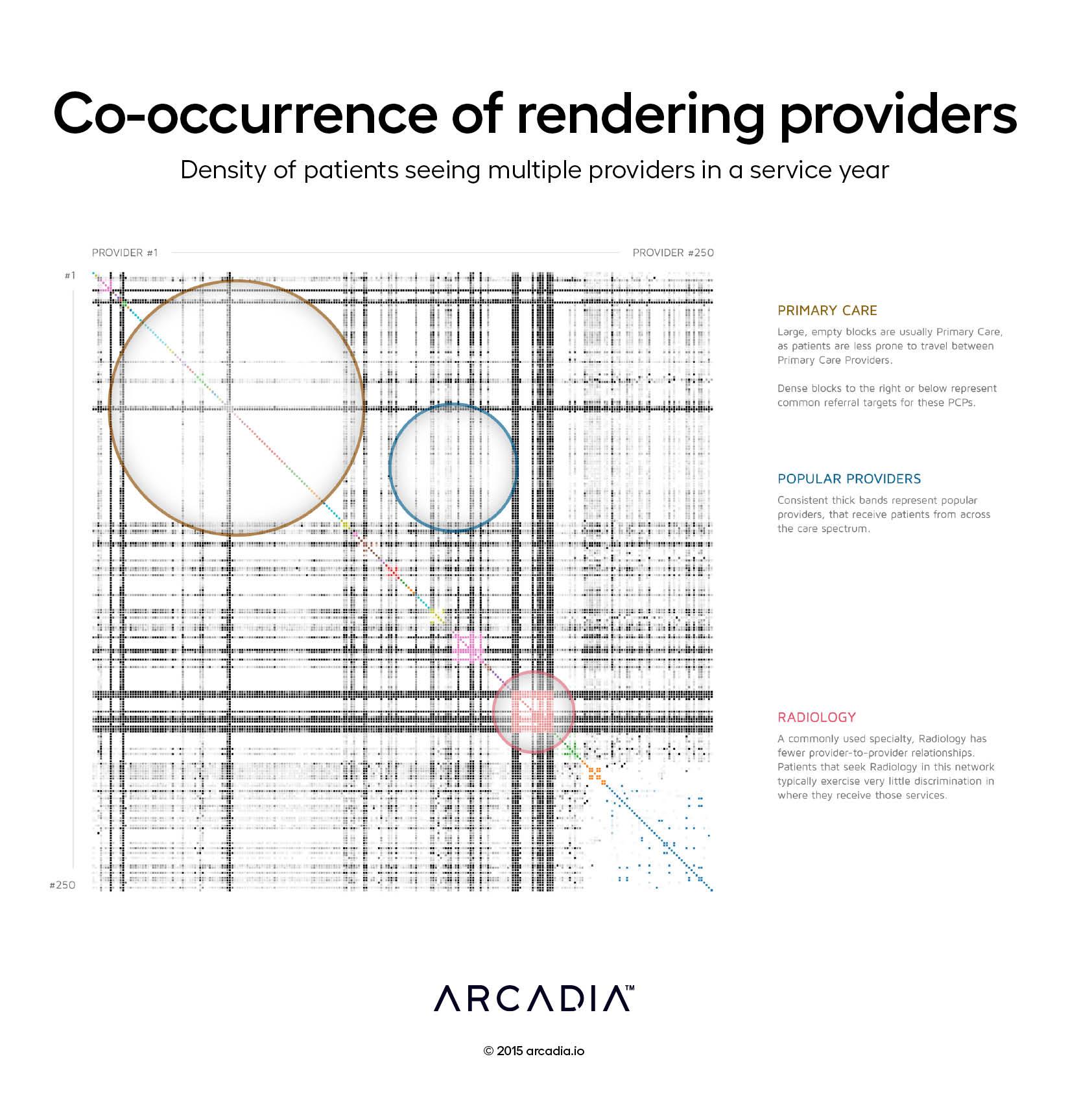Co-occurrence of rendering providers: Density of patients seeing multiple providers in a service year
An alternative to the force-layout network diagram, an Adjacency Matrix can provide a cleaner and more intuitive view of complex relationships.

In this graph, 250 providers are arranged in the same order on the X and Y axes. The color intensity of each box in the resulting matrix represents the number of patients that have seen both providers in a given year, or how much the two providers’ patient bases overlap. The providers are then clustered by specialty, shown as the colored boxes along the 45° line.
The visual highlights some trends that we would expect. There is very little overlap between Primary Care specialties, as patients typically lock into a single provider. Conversely, radiology services see significant overlap, and show very little discrimination for which other providers are involved in a patient’s care.
High-volume providers are shown as dark horizontal and vertical bands, and aberrations — a lone dark or light spot — describes close relationships between two providers.
Details
D3.js SVG, with Illustrator.
Data sourced from a 1.5 Million encounter sample from the Arcadia Benchmark Database.
